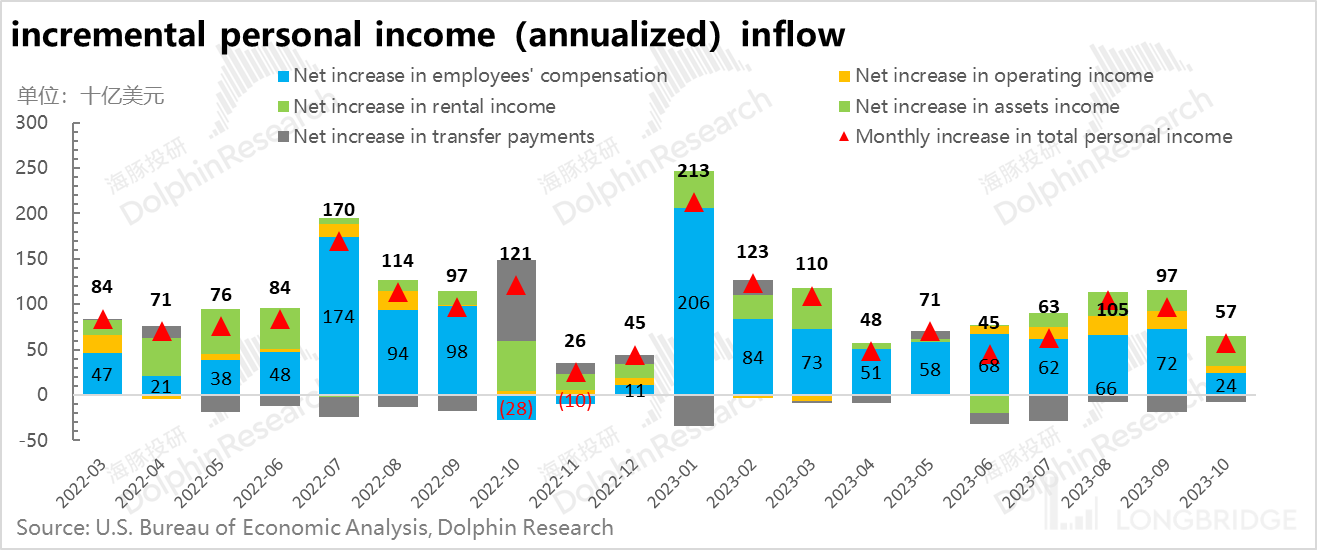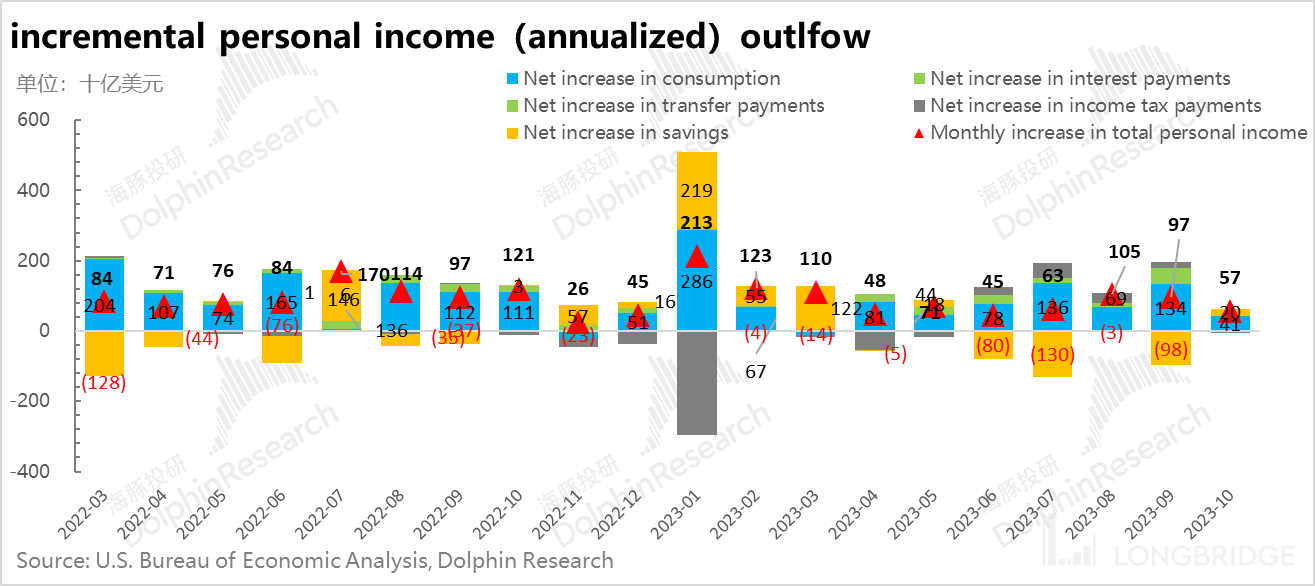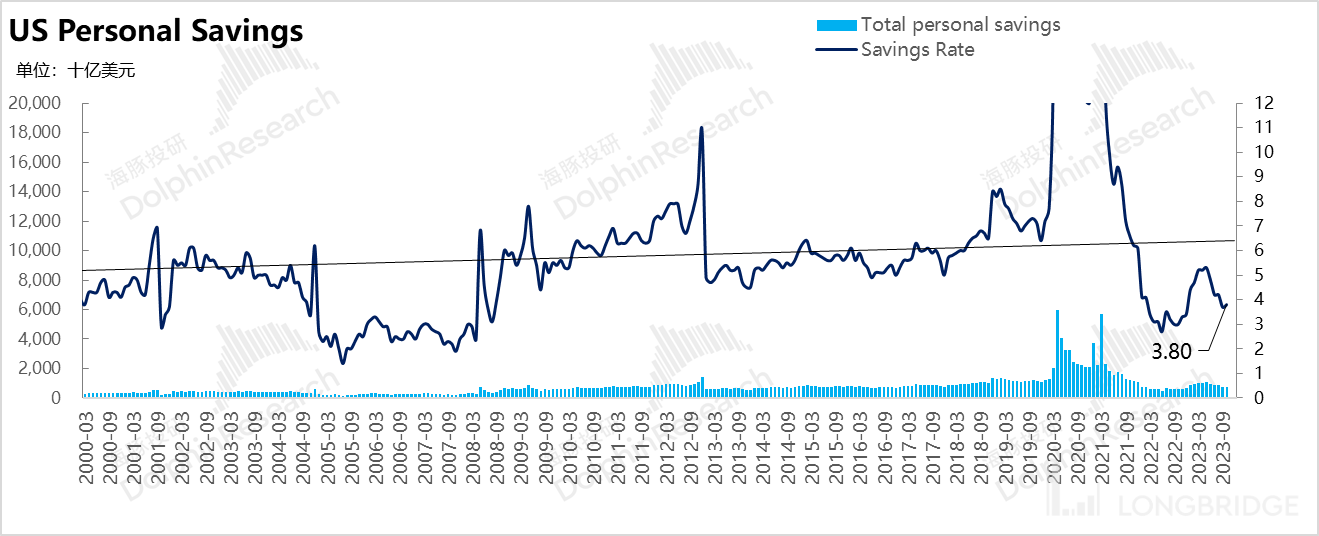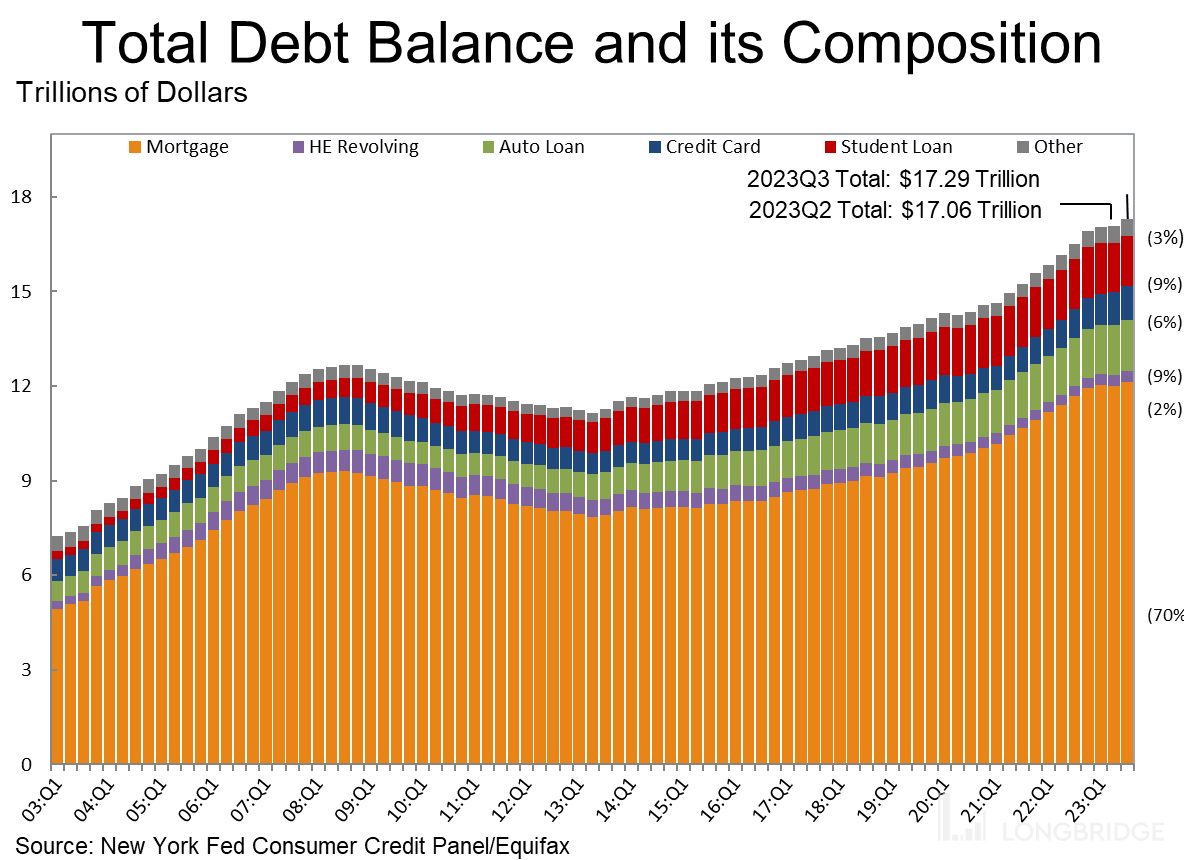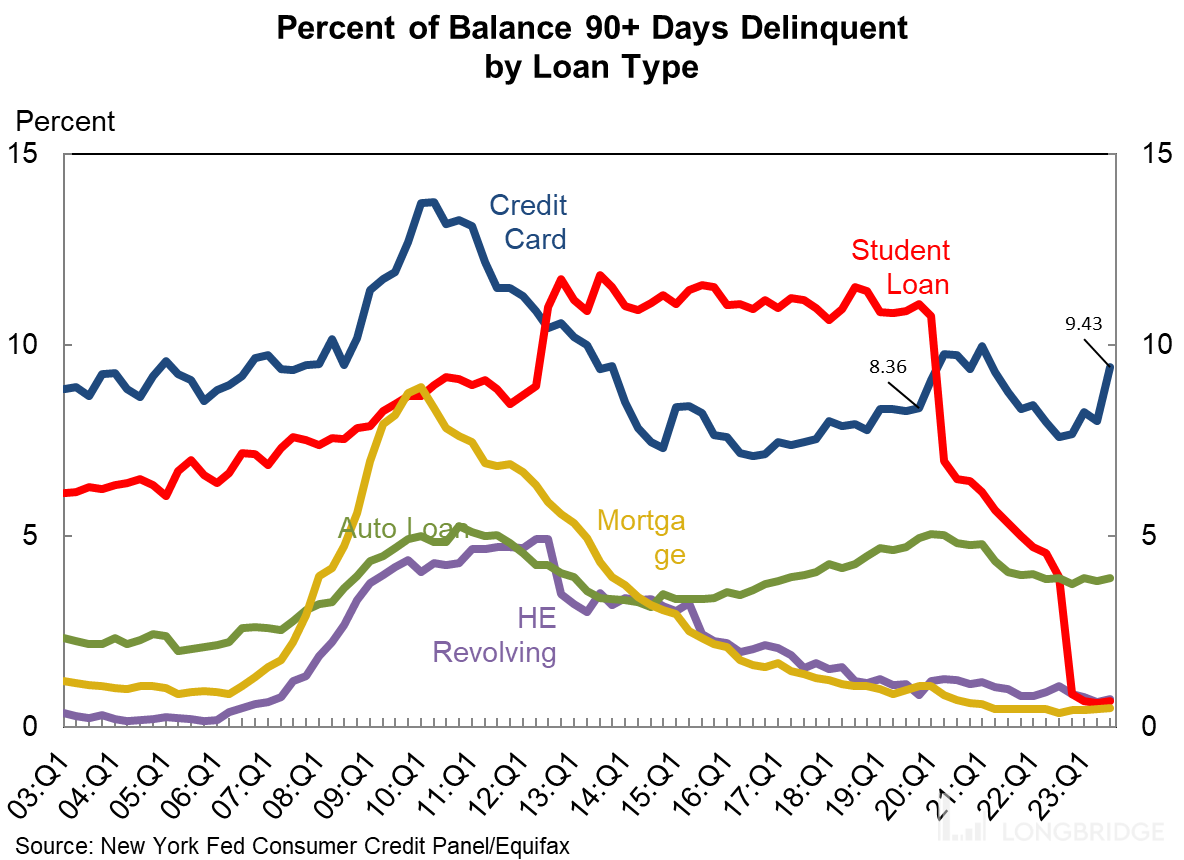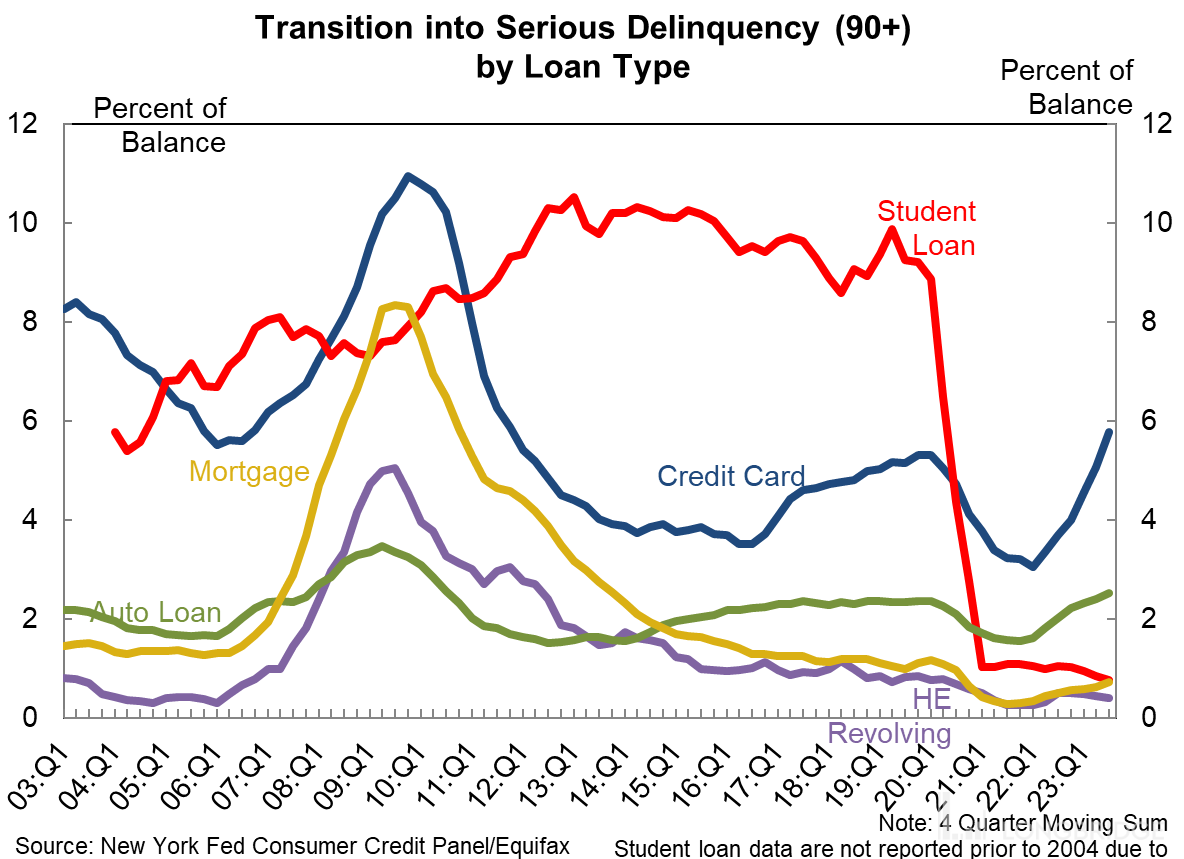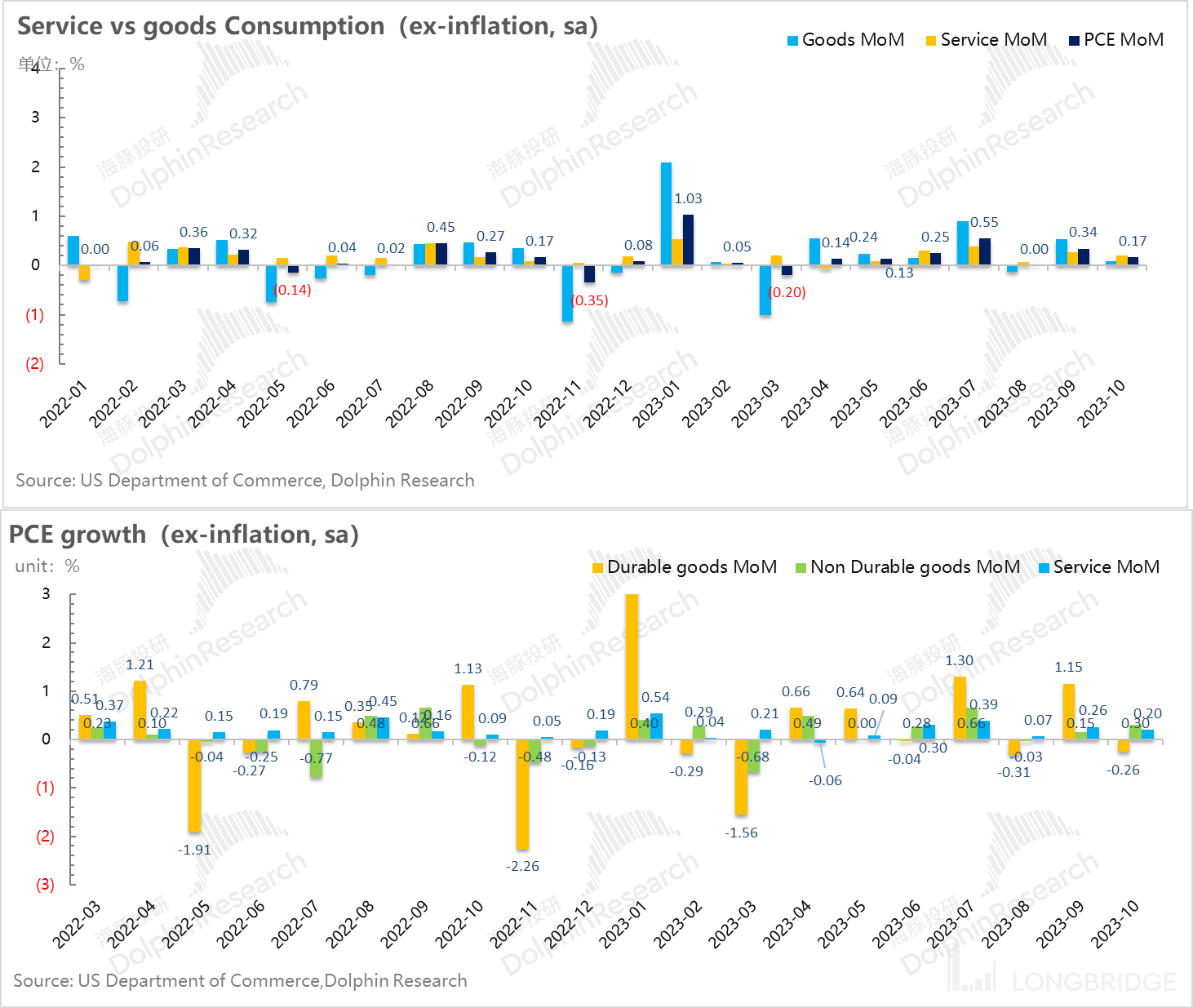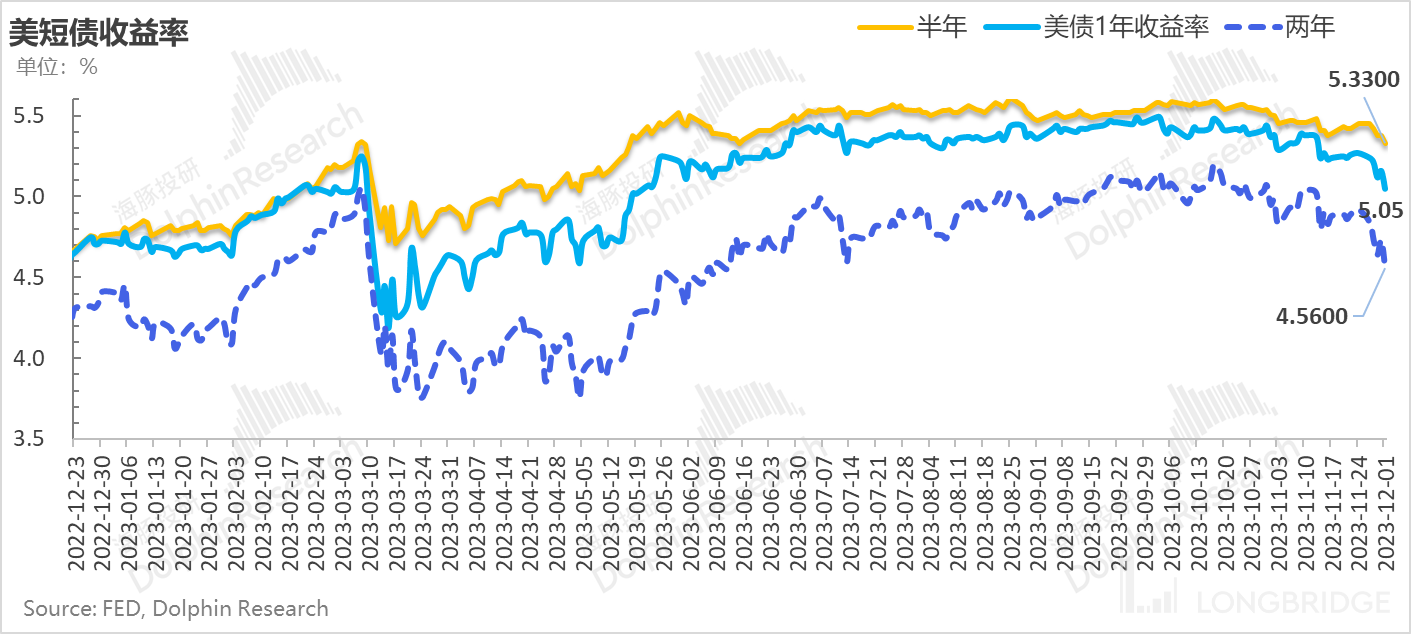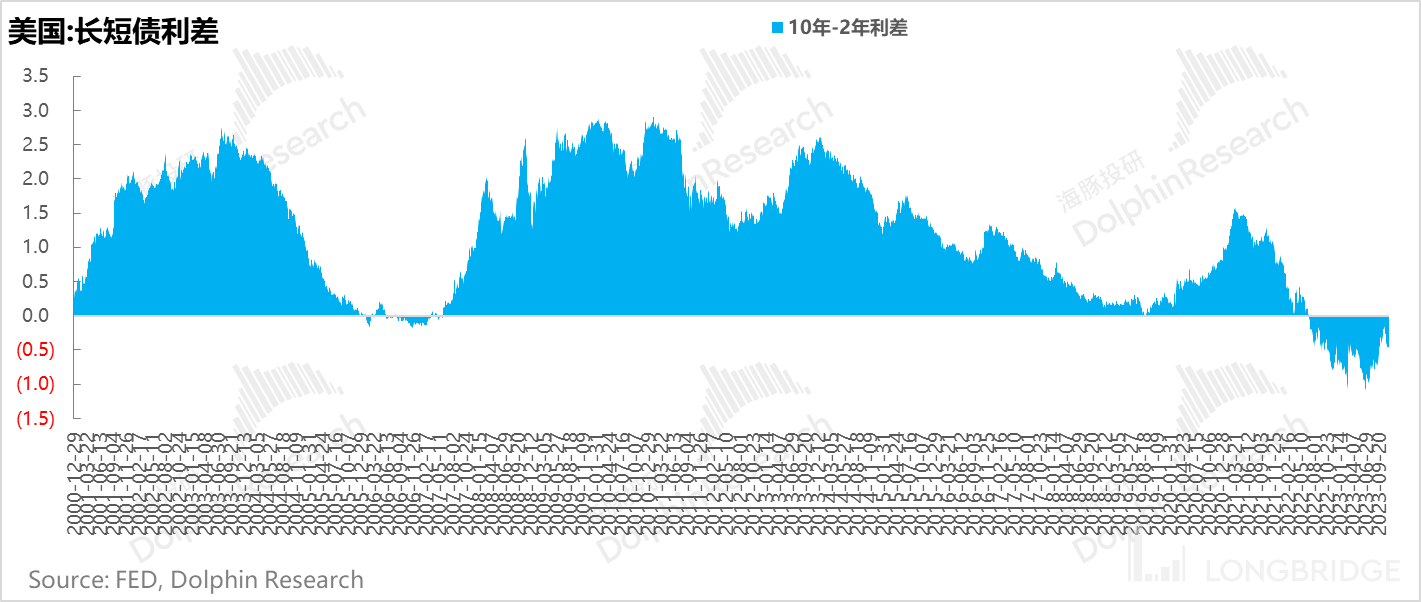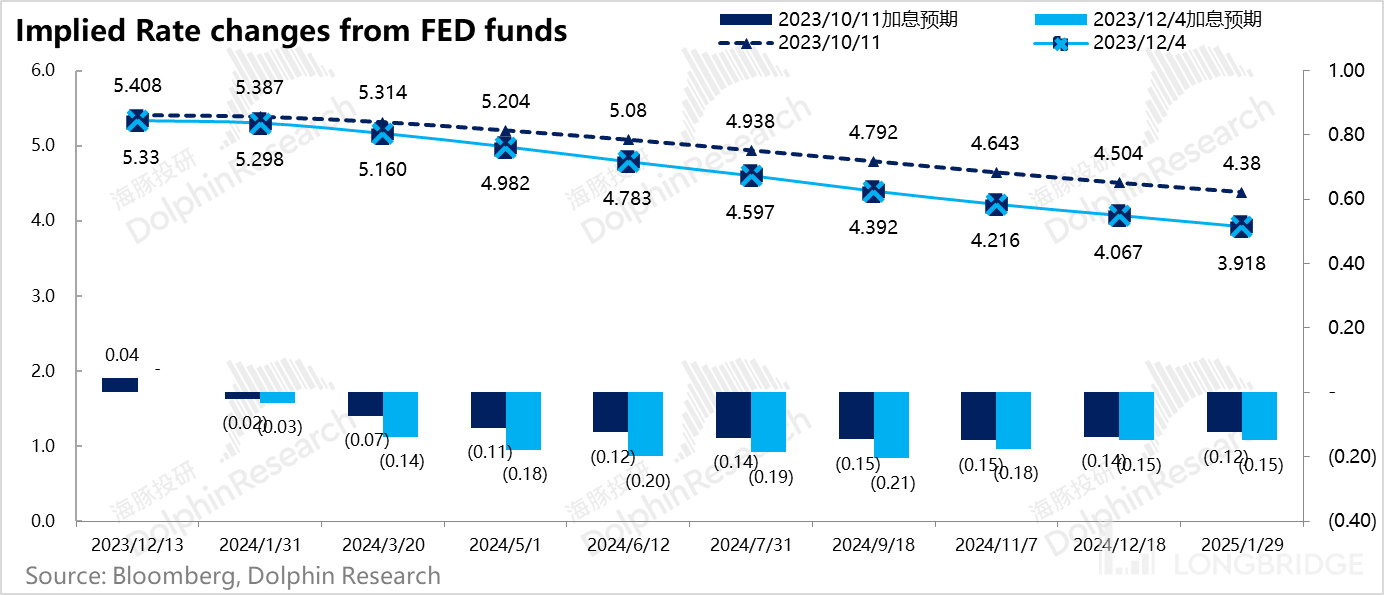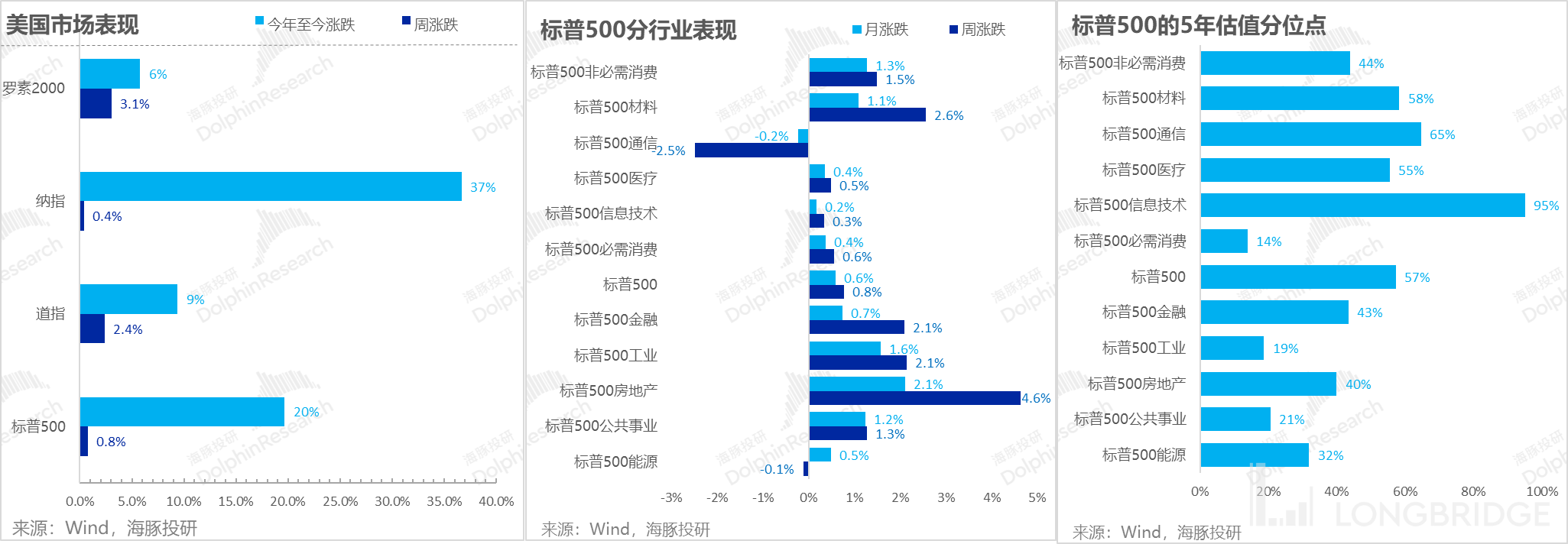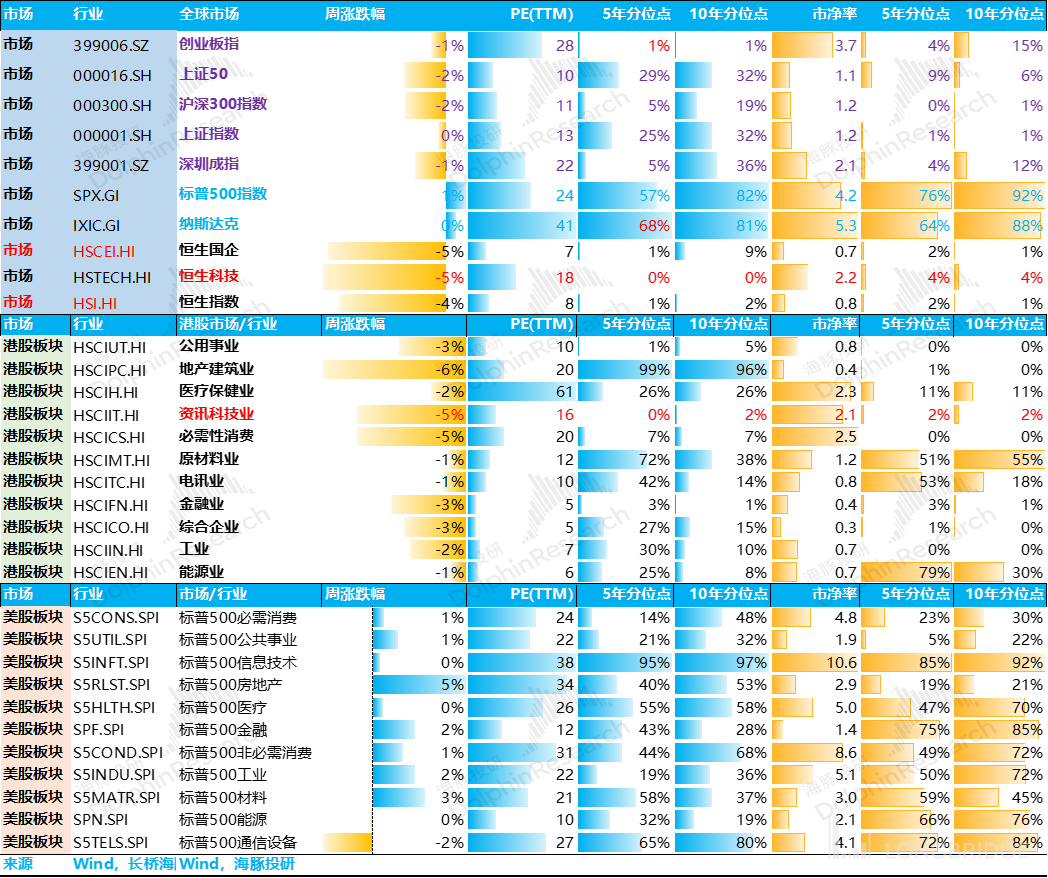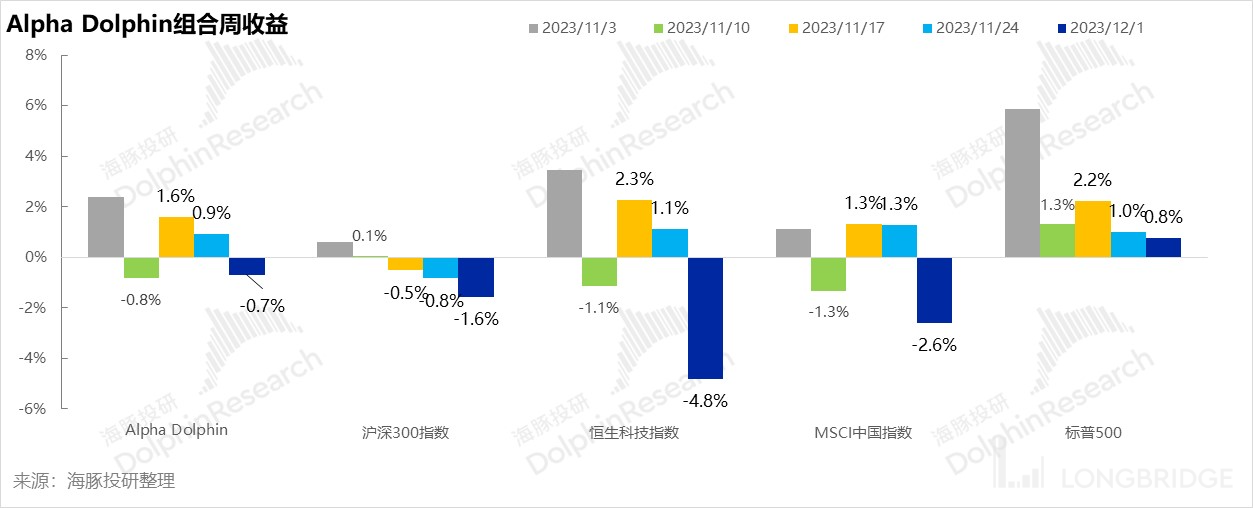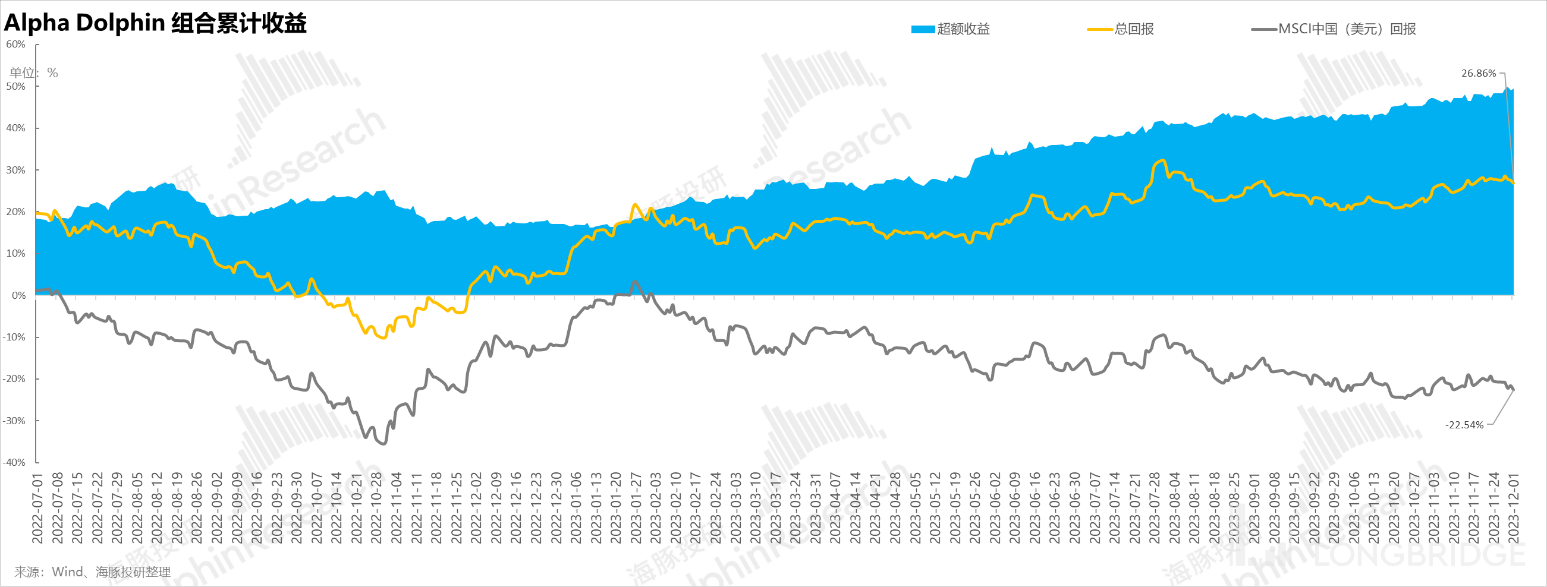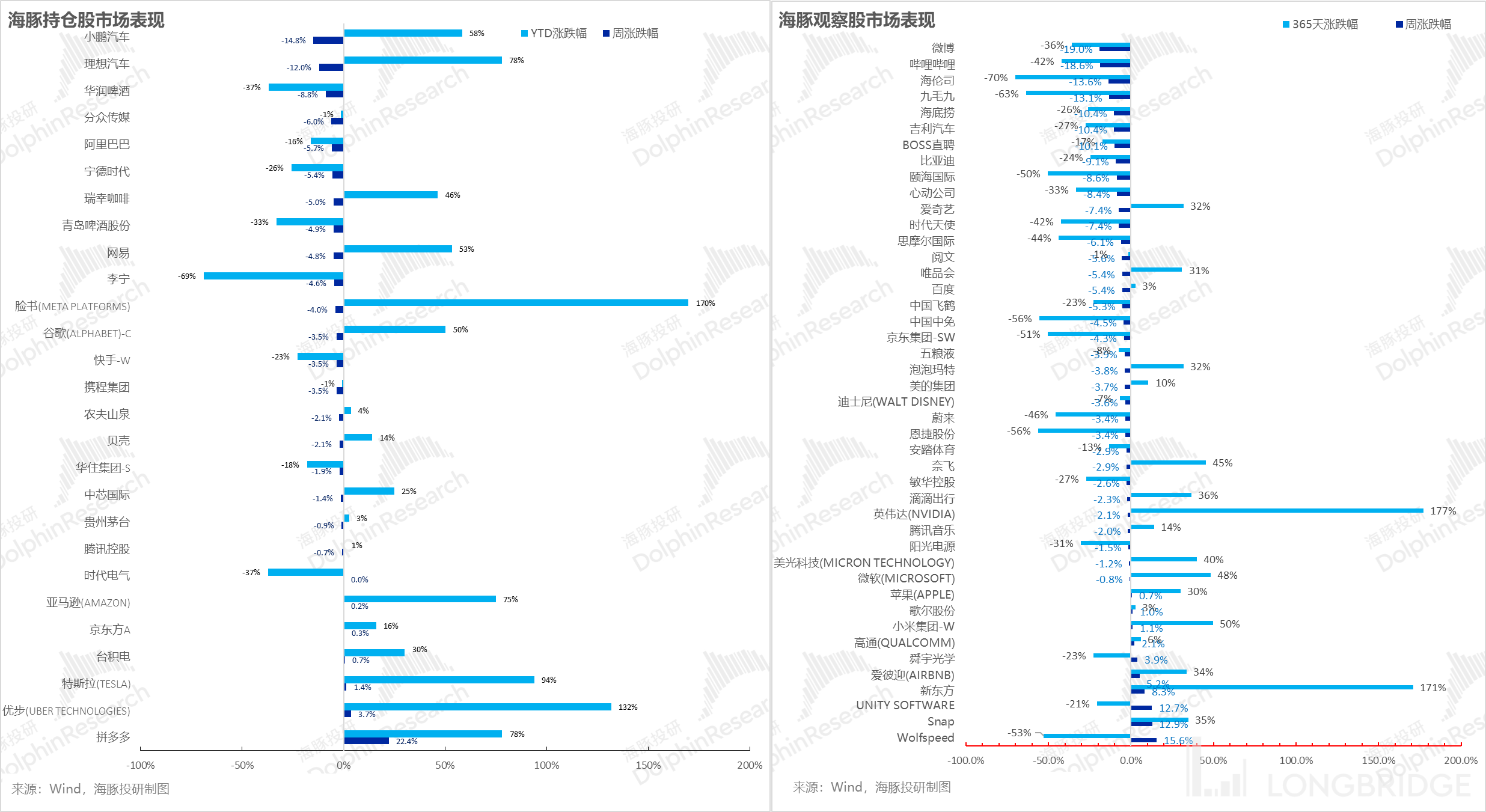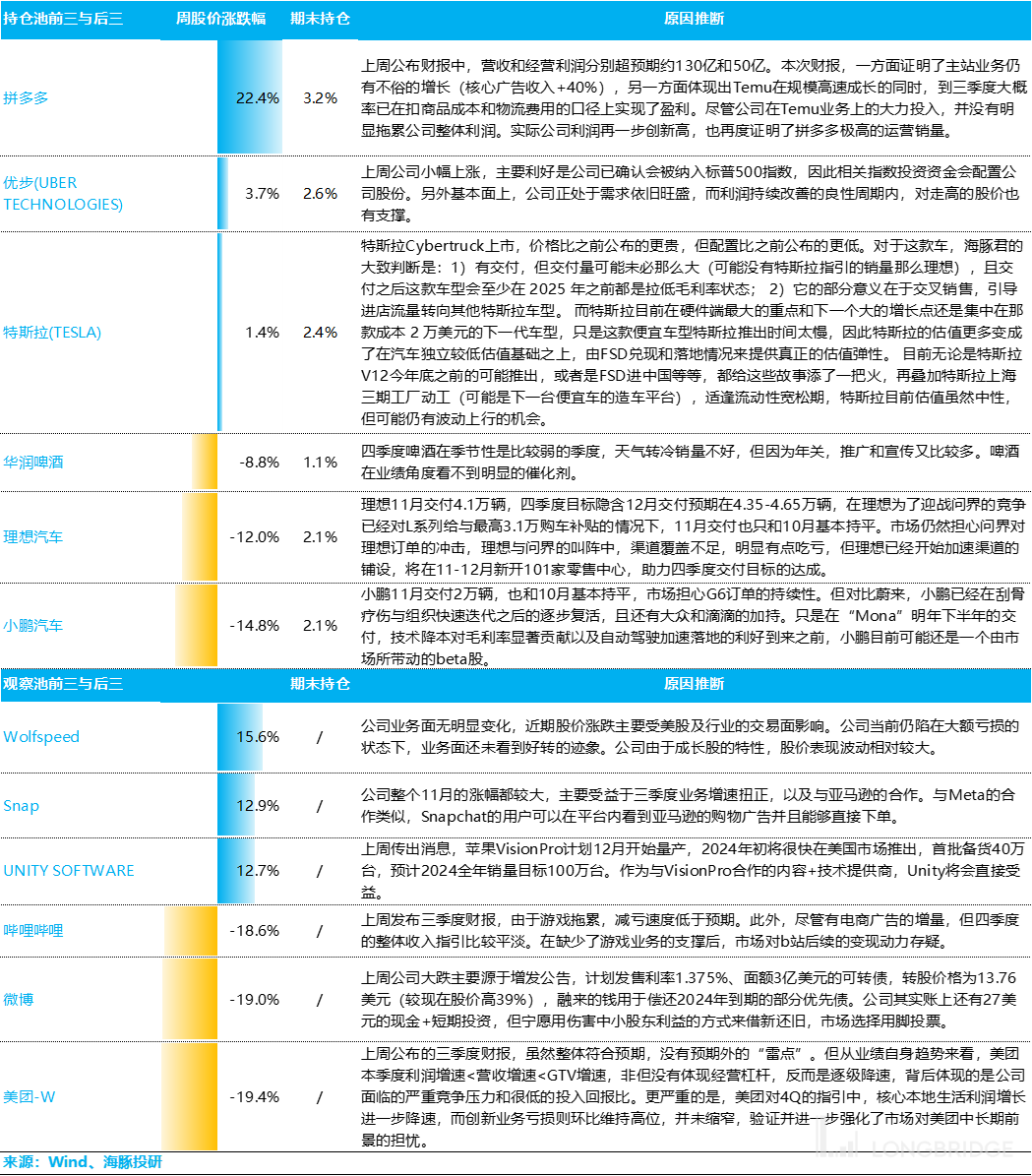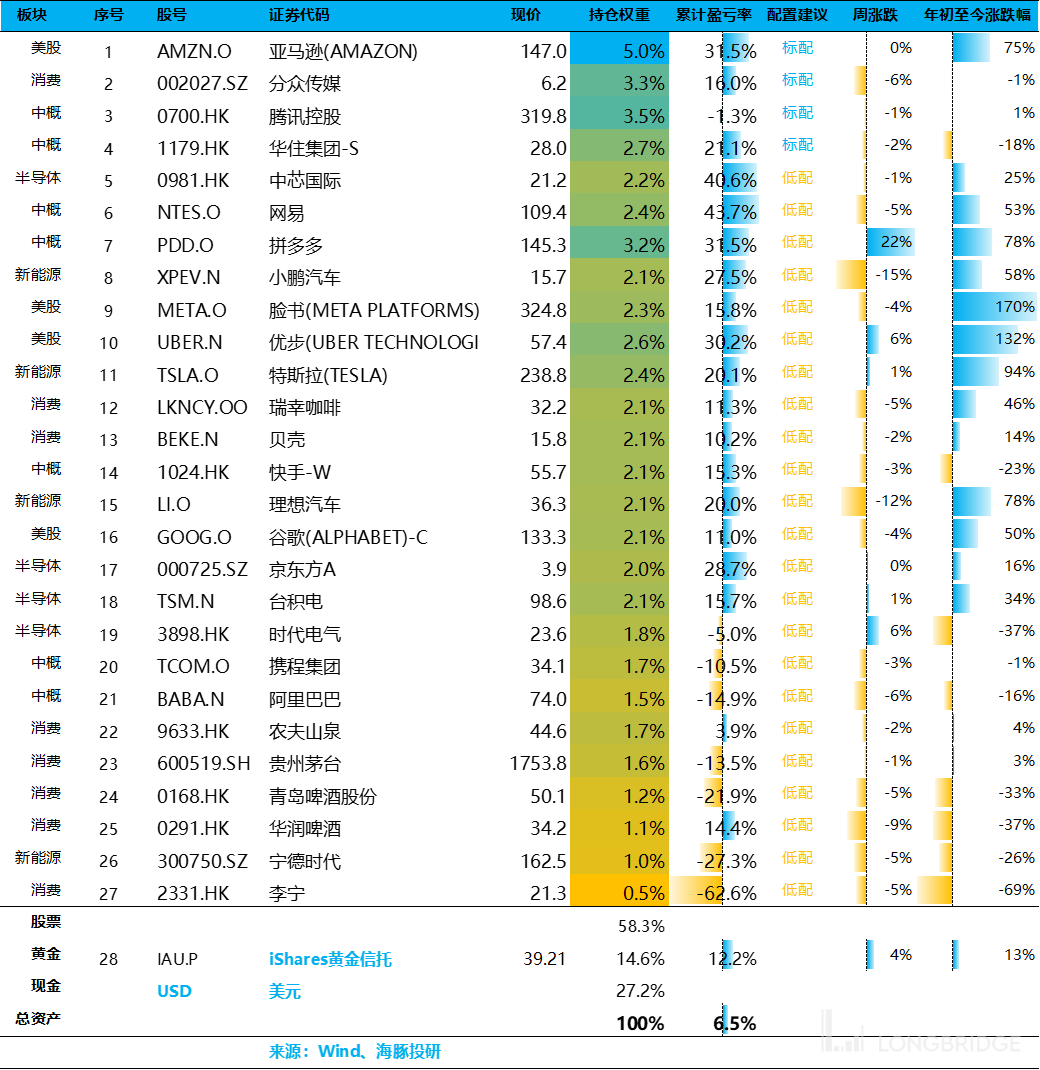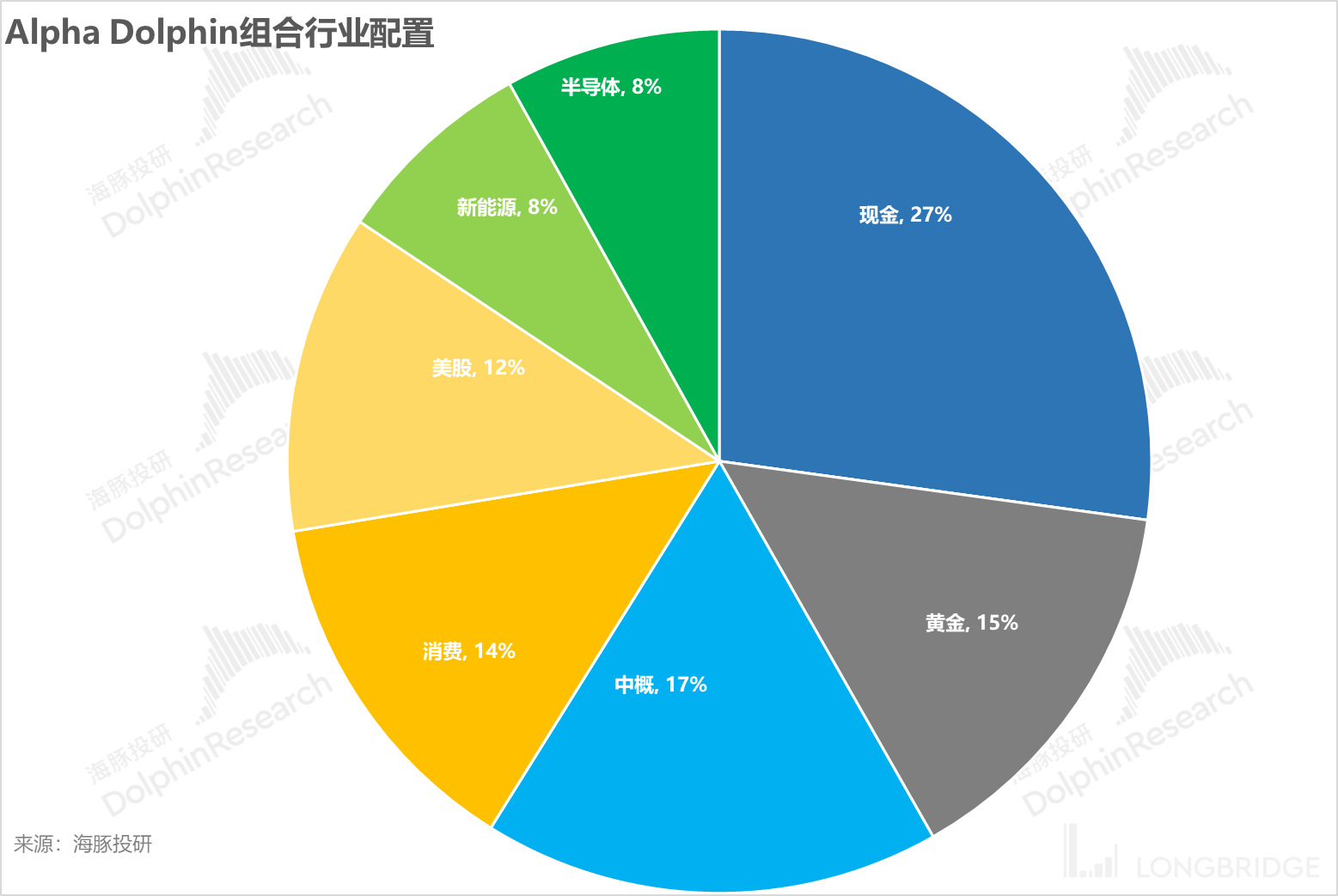
 Likes Received
Likes Received Posts
PostsConsumption cooling, is US Really Only One Step Away from Rate Cuts?

1) US Oct personal income and expenditure: Wage income growth has slowed down, and asset income has started to make up for it, increasing the overall source of income. The savings rate is increasing, leading to a reverse squeeze on consumption, which is rapidly cooling down.
2) Looking at US credit card spending in the third quarter, the demand for credit cards has intensified, while the ability to repay has declined. In Dolphin Research's view, this increase in credit card repayments is due to increased daily consumption and liquidity turnover fund expenditures, deteriorating payment ability, and a reflection of insufficient "residual grain" funds.
3) After the "fake fall" of the last increase and subsequent decrease in the savings rate, Dolphin Research believes that this time there is no assistance from "excess residual savings". The savings rate itself is at a historical low, and the unemployment rate is starting to rise.
Looking ahead to next year, if the US government no longer engages in "sly and cunning bloodletting", the biggest driving force for US GDP growth - consumer spending - has lost its "superpower" that exceeds income growth.
With this continuous interpretation of the data, it will only strengthen the expectation of interest rate cuts and accelerate the timing of interest rate cuts. Of course, the Federal Reserve is still maintaining a tough stance.
What remains is to pay attention to the Federal Reserve's determination and statements, but more importantly, to observe the core indicators of new job creation and the unemployment rate. This is the true basis for determining the timing of interest rate cuts, and it is also the Federal Reserve's confidence. Currently, the labor force is still in a state of supply shortage.
Therefore, if consumption slows down and employment deteriorates rapidly, interest rate cuts may indeed arrive relatively quickly. It is worth closely monitoring the latest employment data for November this week.
4) In terms of asset trading, if the yield spread between long-term and short-term bonds this year was achieved by the increase in long-term bond yields, next year, with the continuous issuance of US bonds but a shift in structure towards the long end, and with the US economy weakening, the yield spread between short-term and long-term US bonds will continue to converge until it turns positive. The short-term bond market next year presents good opportunities.
5) However, looking at equity assets, in terms of high inflation, high interest rates, and high growth, corresponding to value and growth, the valuation of US growth stocks is currently relatively high. The Nasdaq valuation is over 40 times, reaching the 70th percentile in the past five years, while the information technology sector of the S&P 500 has reached the 95th percentile.
Currently, both the Dow Jones Industrial Average and the S&P 500 are at PE percentiles of around 25, and Dolphin Research believes that the pricing for interest rate cuts next year is already quite sufficient. Therefore, one can only look for individual stock opportunities that have the potential for super alpha.
Here are the details:
I. Is US consumption really going to cool down this time?
US resident income and expenditure data for October has been released, which is consistent with the signals from earlier released retail sales data: US consumer spending is rapidly cooling down. After the pandemic, US residents had no worries about finding jobs, wages were rising, and they had surplus funds, leading to a strong sense of security. As a result, they spent money generously, driving consumption growth to consistently exceed income growth. The portion that was originally meant for savings was converted to consumption, further amplifying the growth momentum of the economy. So, let's take a look at the momentum remaining in October. First, let's examine the inflow and outflow of income:
1) Sources of income: Looking at the month-on-month changes in the discounting of annual income, in October, the marginal contribution of employee compensation, which was originally the main source of incremental income, was significantly weak due to the rise in unemployment rate. It only contributed an incremental income of 24 billion USD in October.
However, the total income in October barely maintained a growth of 57 billion USD, mainly relying on volatile property income, mainly interest and dividend income, which contributed a growth of 28 billion USD.
Other income, such as operating income and rental income, had relatively small increments, and income from transfer payments remained negative during the post-pandemic period.
Overall, from the inflow of income, it can be seen that the employment rate is the largest contributing variable to income. The rise in unemployment rate not only affects consumer willingness but also impacts current consumption capacity.
Capital income, such as interest income and dividend income, which are property income, will also face significant pressure when the economy weakens, as they do not benefit from monetary stimulus.
Therefore, the core of this income source actually focuses on the unemployment rate and hourly wage growth rate. In October, the hourly wage growth rate remained stable, while the unemployment rate slightly increased, which will likely result in a weakening of residents' income in October.

2)Outflow of income: Disposable income is the total income minus taxes. Disposable income is used to pay interest on personal debts, and a small portion is transferred to the government as transfer payments. After three layers of filtering, what remains is the residents' consumption expenditure and the money that can be saved and invested.
Generally speaking, excessive savings by residents, although it can enhance the resilience of the economy during a downturn, can also reduce the growth vitality of GDP. Japan and China are both examples of economies with weak domestic demand due to high savings.
In terms of the outflow of income in October, the tax burden on residents by the US government weakened again, reducing the pressure of taxation. After a significant increase in interest payments in September, the growth in interest payments stagnated this month.
However, the issue of overdrawn savings rate that Dolphin Research has been mentioning has started to emerge. After four consecutive months of extreme squeezing of savings, the savings rate in October began to rebound, leading to a reverse squeeze on consumption. As a result, although total income increased by 57 billion USD this month, consumption only increased by 41 billion USD, which is much lower than the 134 billion USD increase in consumption in September.

Speaking of the savings rate, the so-called rebound in October only increased by 0.1 percentage point, bringing the savings rate back to 3.8%, still hovering at historical lows.
Dolphin Research notes that The slowdown in service consumption and the loosening of blue-collar employment (net layoffs in the catering industry in October) indicate that the savings rate may accelerate. Due to the same income increment, blue-collar workers have a stronger ability to release consumption.
Another thing to note is that high interest rates are meant to reward savings, and a high-interest environment should correspond to an increase in the savings rate. However, this wave of US residents has shown obvious countercyclicality. Under high interest rates, the savings rate continues to decline.
Dolphin Research believes that a possible explanation behind this is the excessive savings brought about by the easing of the epidemic. The balance sheets of residents' assets and liabilities are in good shape, which means they don't need to save as much money in the current period. This distorts the normal change in savings behavior during a normal interest rate hike cycle.
This also means that when residents' excessive savings are depleted, although the trend of increasing savings rate may be delayed, it will not be absent. Unless there is no further significant fiscal stimulus to indirectly recharge residents' wallets and employment prospects, if the savings rate accelerates upward in the future, it may further squeeze the 70% contribution of resident consumption to the US GDP.

3) The issue of excessive savings behind residents' repayment ability
The amount of resident consumption depends on: a) current earning capacity; b) future income expectations; c) whether there is enough surplus. The first two can be judged by the unemployment rate, labor market supply and demand, and changes in hourly wages.
The surplus can be indirectly observed from the repayment ability. After all, if there is a surplus, even if there is no current earning capacity, it can be used to repay debts.
Structurally, among the $17.3 trillion in resident debt, the main component is mortgage debt, and there is no systemic default risk within this cycle. In terms of marginal growth rate, the growth rate of auto loans and mortgage loans is relatively slow under high interest rates.
Currently, the only area that is still growing rapidly under high interest rates is revolving credit card debt, with a QoQ growth rate of 4.7% in the third quarter, equivalent to a QoQ annualized growth rate of 20%.

However, behind the strong credit card consumption, there is no corresponding repayment ability:
a) Looking at the substantial default rate of over 90 days, the 90-day default rate for credit cards is already close to 9.5%, exceeding the level in 2019 before the epidemic.

b) The proportion of loan amounts that have been converted into serious defaults of over 90 days is also increasing significantly.

Credit card repayment is a form of daily consumption and liquidity turnover. The increasing demand for credit cards and the decline in repayment ability are actually a manifestation of insufficient "surplus" funds, in Dolphin Research's view.
4) Looking at the breakdown of consumer spending in October: After adjusting for inflation and seasonality, durable goods, with automobiles as the core category, usually require borrowing for consumption, and the MoM growth has turned negative. Non-durable goods support commodity consumption, while service consumption is slowly cooling down. Overall, consumption is showing signs of stagnation.

Based on the above points 1)-4), Dolphin Research believes that after the "fake decline" in the savings rate last time, without the assistance of "excess surplus" this time, the savings rate itself is at a historical low, and the unemployment rate is starting to rise. Looking ahead to next year, if the US government no longer engages in "sly bloodletting", the biggest driving force for US GDP growth - consumer spending - will no longer have the "superpower" to exceed income growth.
II. Equity assets quickly Priced in interest rate cut expectations, but still opportunities in the bond market
From the data in October, it can be felt that if the first half of the year was suppressed by interest rate cuts, the inflationary demand was also suppressed. Continuing high interest rates will further depress real consumption.
Therefore, the dynamic combination of fiscal and monetary policies has become crucial again:
Currently, there are no signs of "increased quantity" in fiscal policy for two consecutive months, but the rigid retirement pressure brought by the concentrated retirement of the baby boomers and the continuous industry stimulus policy make it difficult for the fiscal deficit to narrow significantly.
In terms of monetary policy, the Federal Reserve's selling of government bonds in large quantities will be an action that lasts for many years. The current focus is on the price of money, and of course, Powell is still tough.
The reason why the Federal Reserve is tough at the moment is mainly because the current job market is still relatively strong, with a labor gap of over 9.5 million as of September, and there are only over 6 million unemployed people looking for jobs.
However, at present, the real demand for employment is only in the healthcare industry brought about by the early retirement of the baby boomers. Most of the remaining jobs are cyclical jobs that naturally change with the decline in consumer demand.
From the current bond trading, the market expects two interest rate cuts within a year, with a total of 77 basis points over two years. The yield on the two-year government bond, which is sensitive to interest rate cut expectations, is 4.56%, while the yield on the ten-year government bond is 4.22%. Although they are converging, they are still in an inverted state.
Dolphin Research believes that based on the current pricing of the government bond market, the pricing of interest rate cuts for next year is not aggressive, and there is still further downward space for long-term and short-term bond yields.
However, considering that after the reverse repurchase is exhausted in the first quarter, bond issuance can only turn to long-term bonds, and it is not easy for long-term yields to further decline after the first quarter. However, short-term yields are highly anchored to expectations of interest rate hikes. Next year, if consumer spending fails to ignite, the expectation of interest rate cuts will accelerate. After the first quarter, short-term yields will decline even faster. In the short term, due to the issuance of US bonds, short-term yields are still relying on short-term bonds. With a surplus of short-term bond supply, the decline in short-term bond yields is not fast enough.
From an absolute trend perspective, if this year's yield spread between long-term and short-term bonds is achieved through an increase in long-term bond yields, next year, with the continuous issuance of US bonds but a shift in structure towards the long end, and with the US economy weakening, the yield spread between long-term and short-term US bonds will continue to converge until it turns positive. The short-term bond market next year presents good opportunities.


As can be seen, due to the distortion in the supply of long-term and short-term bonds in the government bond market, short-term bond yields have not declined enough. However, from the perspective of US federal funds futures, the market is already anticipating interest rate cuts starting in the first quarter of next year, with a total of 125 basis points cut by the end of the year.

However, from the perspective of equity assets, in terms of high inflation, high interest rates, and high growth, corresponding to value and growth, the valuation of US growth stocks is currently relatively high, with the Nasdaq valuation at over 40 times, reaching the 70th percentile in the past five years, while the information technology sector in the S&P 500 has reached the 95th percentile.
Currently, both the Dow Jones Industrial Average and the S&P 500 are at PE percentiles of around 25, and Dolphin Research believes that the pricing of interest rate cuts for next year is already quite sufficient. Therefore, one can only seek individual stock opportunities with super alpha at the stock level.

The Hang Seng Index valuation has hit a new low, but taking the Hang Seng Tech Index as an example, the index's sharp decline is due to the underperformance of its constituent stocks. Companies such as Meituan, Alibaba, Tencent, JD.com, and Baidu are all in a state of poor performance.
Other heavyweight stocks such as Xiaomi, Li Auto, Kuaishou, NetEase, and SMIC have shown relatively stable performance, but obviously they do not have the strong performance style of Pinduoduo, which cannot lift the index.
So to some extent, it is more accurate to say that the Hang Seng Tech Index is undervalued rather than the weak fundamentals of individual stocks. The valuations of these stocks are generally low, but the rebound of the index may also require a reversal in the fundamentals of these companies. Otherwise, there is no real opportunity for an upward trend, at most, there will be bottom oscillations.

III. Portfolio Rebalancing
There were no portfolio rebalancing activities last week.
IV. Portfolio Performance
On December 1st, Alpha Dolphin's virtual portfolio experienced a 0.7% decline in returns, outperforming the Shanghai and Shenzhen 300 Index (-1.6%), Hang Seng Tech Index (-4.8%), and MSCI China Index (-2.6%), but underperforming the S&P 500 Index (+0.8%).

Since the start of the portfolio testing until the end of last week, the absolute return of the portfolio was 27%, with an excess return of 49% compared to the MSCI China Index. From the perspective of asset value, Dolphin Research's initial virtual assets were $100 million, which has now increased to $128 million.

V. Individual Stock Contribution
From last week's trading, it can be observed that US tech stocks have experienced a rally, including stocks such as Snap, Unity, and Wolfspeed. In contrast, among Chinese assets, only Pinduoduo, which relies on its strong fundamentals, has shown better-than-expected growth.
On the list of declining stocks, apart from new energy vehicle companies that are expected to face fierce competition next year, the remaining companies either have poor performance and declining valuations, or have weak performance despite already having high valuations, such as most consumer stocks.

Regarding the major companies with significant changes in their stock prices in Dolphin Research's portfolio and watchlist, as well as the possible reasons behind these changes, Dolphin Research's analysis is as follows:

VI. Portfolio Asset Allocation
There were no portfolio rebalancing activities for Alpha Dolphin's virtual portfolio this week. The portfolio consists of 27 stocks, with four core holdings and the remaining equity assets being underweighted. The remaining assets are allocated to gold and US dollars.
As of the end of last week, the asset allocation and equity weightings of Alpha Dolphin's portfolio are as follows:


7. Key Events This Week
The Chinese concept financial report season ended this week, with only one company left - NIO. It is clear that NIO's problem is not just about selling cars, but also about a lack of focus in its business and weak execution capabilities.
The key focus is whether the company will make strategic adjustments, whether it will continue to invest heavily in battery swapping, and the launch time and R&D progress of its sub-brands, Alps and Firefly.
Risk Disclosure and Statement for this Article: Dolphin Research Disclaimer and General Disclosure
For recent articles in Dolphin Research's portfolio weekly report, please refer to:
"The Overdraft Moment for US Stocks, Finally the Opportunity for Chinese Concepts"
"The Return of the 'Sun Never Sets' Belief in US Stocks, Is it Reliable this Time?"
"High Interest Can't Extinguish Consumption, Is the US Really Thriving or Just Hype?"
"The Second Half of the Fed's Tightening, Neither Stocks nor Bonds Can Escape!"
"Did JD.com Bring Down Chinese Concepts? The Root Cause Lies in the Three Highs of US Stocks"
"Tech Makes a Comeback: Can US Stocks Replicate the Brilliance of the First Half of the Year?" 《The Federal Reserve's "Iron Fist" Continues to Hammer, and the U.S. Stock Market Can't Hold On Anymore!》
《The Second Half of the Year: Mediocre for U.S. Stocks, Waiting for Chinese Concepts》
《Don't Panic, the Bottom for Chinese Concepts May Have Arrived》
《U.S. Unemployment Rate Rises, Hope for Chinese Concepts Arises》
《Inflation vs. Siphoning, Tough Times Ahead in the Second Half of the Year》
《Is the U.S. Government Spending Money Like Water? The Backlash Has Arrived》
《The "Brotherhood" Behind NVIDIA and Tesla, Can It Continue in the Second Half of the Year?》
《Is There Redemption for the Hong Kong Stock Market?》
《Fitch Ratings is Just a "Paper Tiger," Chinese Concepts Still Have Hope》 "After the violent rebound, should we stay or leave the Hong Kong stock market?"
"With the US interest rate reaching its peak, is there hope for the Hong Kong stock market?"
"Reality strikes, how far can the rebound of Chinese concept stocks go?"
"Looking ahead, will the US interest rate hike exacerbate stagflation?"
"Decoding the mystery of low savings in the US, is it sustainable?"
"US housing market: Subprime sins, why is it resilient this time?"
"Unraveling the recession: Where did it go after being mentioned, and can it come back?"
"Can a short essay influence the market? Extreme pessimism followed by overcorrection is the key."
"The US stock market frenzy continues? Economic schizophrenia, beware of the downside after extreme joy." Article: "Battle between Hell and Revelry: What are the US and Hong Kong stock markets trading?"
Article: "US stocks pull valuation, Hong Kong stocks kill Beta? Don't despair, reversal is imminent"
Article: "ChatGPT vs Performance Release, can the giants support the US stock market?"
Article: "Is the promise of 'US recession, China recovery' going to be in vain?"
Article: "US service consumption collapses, US stocks celebrate?"
[Article: "US stocks are going to decline, interest rates are going to be cut? Anyway, the trading has already taken the lead"](https://longportapp.com/zh-CN/topics/4444430? app_id=longbridge&channel=t4444430&invite-code=032064)
"Silicon Valley Bank Run Crisis: Is the US Recession Running to the Scene?"
"The US Stock Market Gives Up Trading and Rushes Ahead, the World Can Finally Breathe"
"Proof of Inflation Rising? Adversity Brings Opportunities"
"Put Inflation Aside, Signals in Alibaba and Baidu Are More Important"
"Hong Kong and the US Are Both Weak, Is the Wolf Coming Again?"
"The Puppeteer of High-Frequency Macro, the US Stock Market is a Puppet Market"
"A Single Candlestick Changes Beliefs, Tesla Leads the US Stock Market Comeback?"
"How Far is the Changing Situation of the US Stock Market 'Danger'?"
"The US Stock Market Doesn't Have a Red New Year, but Performance Hammer is Just Around the Corner?"
"Digging into the Root Cause of the US Stock Market's Stagnation"
- CPI has fallen, why is the Fed still so stubborn?
- Is it really easy to eliminate service inflation? Beware of market overcorrection
- Has Hong Kong stocks finally found their backbone? Independent market trends can still continue
- The darkest hour before dawn: Is the mindset focused on darkness or dawn?
- US stocks "fighting back" reality, how long can emerging markets continue to bounce?
- Global valuation recovery? There is still the hurdle of performance verification
- China's asset violence drives up, why is there a stark contrast between China and the US?
- Amazon, Google, Microsoft, are the giants falling? The "meteor shower" in US stocks is not over yet
- Behind the expectation of policy shift: Is the "strong dollar GDP growth" unreliable?
- The battle between southbound and northbound investors, another test of "determination"
- Slowing down rate hikes? The American dream shattered once again
- Getting to know the "iron-blooded" Fed again "Melancholy Second Quarter: The 'Eagle's Cry' Resounds, Collective Crossing Becomes Difficult"
"Fall to Doubt Life, Is There Still Hope for Reversal in Desperation?"
"The Federal Reserve Violently Hammers Inflation, Domestic Consumption Opportunities Arise Instead?"
"Global Markets Plunge Again, Labor Shortage in the United States is the Root Cause"
"The Federal Reserve Becomes the Number One Bear, Global Markets Collapse"
"A Bloodbath Triggered by a Rumor: Risks Have Never Been Eliminated, Searching for Sugar in Broken Glass"
"The United States Shifts Left, China Shifts Right, Cost-effectiveness of US Assets Returns"
"Layoffs are Too Slow and Insufficient, the United States Must Continue to 'Decline'"
"US Stocks Celebrate 'Funeral': Recession is a Good Thing, Most Aggressive Rate Hike is Bearish to the Fullest"
"Rate Hike Enters the Second Half, 'Earnings Thunder' Begins"
"The Pandemic Strikes Back, the United States Faces Recession, and Capital Changes Its Mind" "Current Chinese Assets: No News is Good News in the US Stock Market"
"Growth is Already a Carnival, but Does it Mean the US is Definitely in Decline?"
"Is the US in Recession or Stagnation in 2023?"
"US Oil Inflation, Will China's New Energy Vehicles Grow Stronger?"
"Faster Rate Hikes by the Federal Reserve, Opportunities for Chinese Assets Instead"
"US Stock Market Inflation is Off the Charts Again, How Far Can the Rebound Go?"
"The Most Down-to-Earth Dolphin Investment Portfolio is Now Live"
The copyright of this article belongs to the original author/organization.
The views expressed herein are solely those of the author and do not reflect the stance of the platform. The content is intended for investment reference purposes only and shall not be considered as investment advice. Please contact us if you have any questions or suggestions regarding the content services provided by the platform.

